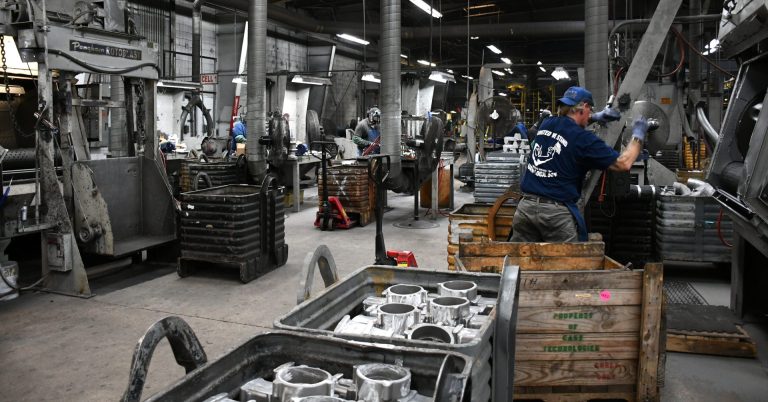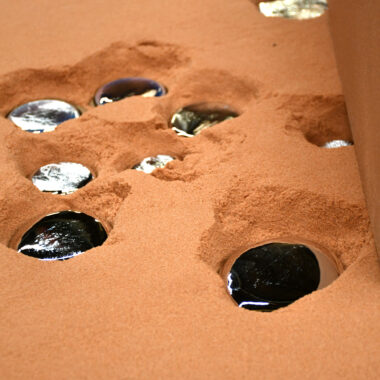Change Your Production with Aluminum Casting Innovations
Change Your Production with Aluminum Casting Innovations
Blog Article
The Top Methods for Aluminum Casting That You Required to Know
In the realm of aluminum precision, casting and experience are paramount. Comprehending the subtleties of various casting methods can dramatically impact the high quality and effectiveness of the last item. From the standard sand casting approach to the elaborate investment casting procedure, each strategy offers distinct advantages that deal with various task needs. As we browse via the top techniques for aluminum spreading, it becomes evident that mastering these methods is important for accomplishing optimum outcomes. Let's check out the complexities of these methods and exactly how they shape the world of aluminum casting.
Sand Casting Strategy
The Sand Spreading Method is an essential method in light weight aluminum spreading, widely made use of for its cost-effectiveness and versatility in creating detailed steel shapes. This strategy includes creating a mold and mildew made from compacted sand right into which molten light weight aluminum is put, allowing it to strengthen and take the form of the mold and mildew. Among the key benefits of sand casting is its capacity to create complex geometries with fairly low tooling costs, making it an eye-catching choice for manufacturers aiming to produce unique parts.
In the sand casting procedure, a pattern of the last component is pressed right into a fine sand combination included within a flask. As soon as the pattern is eliminated, a dental caries standing for the final component's form is left in the sand. Molten aluminum is after that poured into the dental caries, filling the space and taking on the exact details of the pattern. After the aluminum solidifies and cools down, the sand mold and mildew is damaged away, exposing the newly cast light weight aluminum component. Sand casting is frequently made use of in numerous industries, consisting of auto, aerospace, and art foundries, because of its capacity to produce both little and big metal elements with complex layouts.

Investment Casting Refine
An elaborate method employed in light weight aluminum casting is the Financial investment Casting Process, known for its capability to produce very detailed and detailed steel elements. Referred to as the lost-wax casting procedure, this technique dates back thousands of years and remains a prominent choice in different sectors due to its flexibility and accuracy.
The investment casting procedure starts with the development of a wax pattern, which is covered with a ceramic shell to develop a mold and mildew. The wax is then melted out, leaving a dental caries in the shape of the desired component. Molten light weight aluminum is poured into the ceramic mold and mildew, filling the cavity and taking on the elaborate information of the original wax pattern.
This method is favored for its capacity to generate complex shapes with exceptional surface area finish and dimensional accuracy. It is frequently made use of in the manufacturing of aerospace components, jewelry, and industrial equipment where elaborate designs are needed. The financial investment casting procedure provides high repeatability and can create get rid of marginal machining called for, making it an affordable option for several applications.
Irreversible Mold And Mildew Technique
Employing a different strategy from the Investment Casting Process, the Permanent Mold and mildew Technique in aluminum casting provides an unique method for creating steel components. In this approach, a reusable mold and mildew, normally constructed from steel or actors iron, is used to shape the liquified light weight aluminum. The mold and mildew is preheated to a specific temperature prior to the light weight aluminum is poured into it. The warmth transfer from the molten metal to the mold and mildew aids in strengthening the aluminum quickly, minimizing the cooling time compared to sand casting.
One of the vital advantages of the Irreversible Mold And Mildew Method is the improved surface area finish and dimensional accuracy of the castings our website produced. This method is likewise understood for its capacity to create high-strength aluminum components with regular high quality. Furthermore, the multiple-use nature of the mold makes it an economical alternative for tool to high quantity production runs.
Die Spreading Technology
Using innovative manufacturing processes, die casting innovation provides a very efficient method for producing elaborate aluminum elements. This technique involves infusing molten aluminum into a steel mold and mildew, referred to as a die, at high stress. The die is particularly created to form the aluminum into the preferred form, leading to high precision and exceptional surface finish.
Die casting deals several benefits. It enables the production of complicated forms with slim walls, tight resistances, and smooth surfaces, making it optimal for applications where appearances and accuracy are vital. Additionally, die casting makes it possible for fast production rates, lowering total production time and expenses.

Lost Foam Casting Method
Die casting technology's performance and precision in producing aluminum elements lead the way for discovering the Lost Foam Spreading Approach as a corresponding production strategy. Lost Foam Spreading, additionally understood as evaporative pattern spreading, is a technique that utilizes foam patterns to produce elaborate light weight aluminum parts.
One of the vital advantages of Lost Foam Casting is its capability to produce intricate styles with intricate information that may be testing to achieve via conventional spreading techniques. As industries proceed to demand light-weight yet durable components, Lost Foam Spreading shows to be an important approach in the world of light weight aluminum casting.
Final Thought
In conclusion, recognizing the top methods for light weight aluminum casting is critical for accomplishing premium cause the manufacturing procedure. Sand casting, investment spreading, permanent mold, pass away spreading, and lost foam spreading are all Web Site efficient techniques for generating aluminum components with various degrees of complexity. By grasping these strategies, manufacturers can make sure that their products meet the preferred requirements and standards for performance and toughness.
From the traditional sand casting method to the elaborate financial investment spreading procedure, each technique provides special benefits that provide to various task requirements.The Sand Spreading Strategy is a basic method in aluminum casting, widely utilized for its cost-effectiveness and adaptability in producing complex steel shapes. Lost Foam Spreading, likewise understood as evaporative pattern casting, is a technique that utilizes foam patterns to produce complex light weight aluminum parts. As markets continue to demand lightweight yet resilient elements, Lost Foam Casting shows to be an important method in the realm of light weight aluminum spreading.
Sand spreading, financial investment spreading, long-term why not check here mold, die casting, and shed foam casting are all effective methods for creating light weight aluminum parts with different levels of intricacy.
Report this page